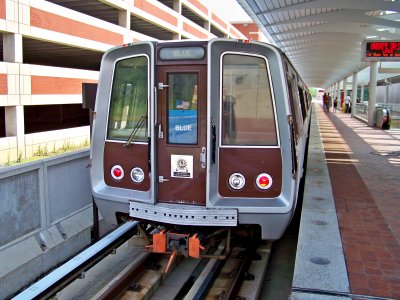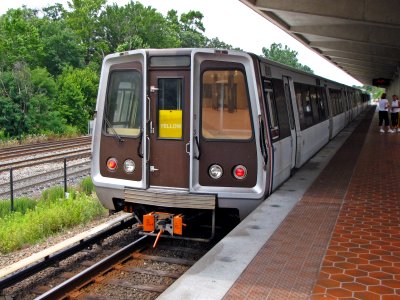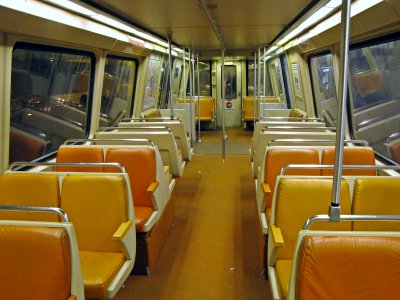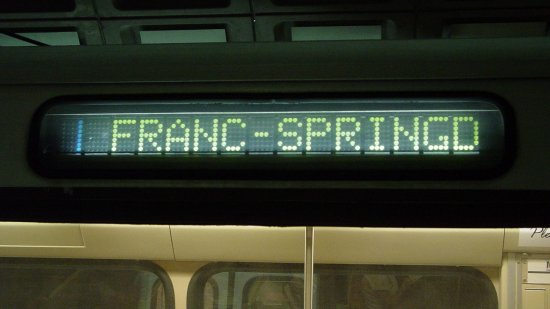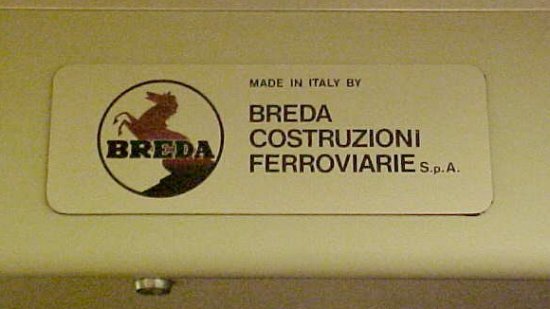Yesterday’s future is tomorrow’s memories…
3 minute read
June 29, 2017, 8:00 AM
This month, the thing that we all knew was coming finally came: Metro retired the final 1000 and 4000-Series railcars. That means no more of these:
And no more of these:
That also means no more of this:
And no more of this:
And also no more of this:
Yes, era of orange carpet, orange seats, tan walls, rubber handrails, and flip-dot signage has ended. Yesterday’s future becomes tomorrow’s memories. These cars, which were state of the art and somewhat futuristic in the 1970s and the 1990s, respectively, are now, for the most part, memories.
Memories, because this is the style of Metro that many of us grew up with. This is what we all thought of whenever we rode Metro in younger years, before the 5000-Series came in with LED signage and an updated color scheme. The stations may look mostly the same, but the vehicles definitely don’t look the same anymore, as the 7000-Series, which replaced these cars, demonstrates.
My first Metro ride was on a Rohr, riding the Blue Line from Pentagon City to McPherson Square. I specifically remember the large red cover over the emergency door release from that ride. My second Metro ride, going back to Pentagon City, was on a Breda, though I misremembered it for many years as being another Rohr. Nonetheless, these were the cars where I really discovered things, where my inner foamer really began to form. On our next trip up to Washington six months later in December 1994, which was the first that originated at Vienna, I noticed that the handrails on the seats were brown rubber rather than metal, as they had been on our first trip. Looks like someone found a Breda! Then in summer 2000, on a trip up here by myself, I first discovered the word “Breda” on a builder’s plate:
I had never really thought about where Metro trains came from. As it turned out, many of them came from Italy. It was later, by reading the history page on Metro’s website, that I learned that other cars were made by Rohr.
I think that this retirement also is a big thing for many of us because for over 30 years, all of the car orders have increased the fleet size rather than replacing cars. So we always had the older cars running alongside the newer ones. One Red Line train could be 1000-Series cars. The next one could be 6000-Series cars. With the 7000-Series, it’s not only fleet expansion, but also replacement of 592 railcars, as the 1000 and 4000-Series have been retired, and eventually, 7000-Series cars will replace the 5000-Series as well, as Metro opted to forgo a rehab on these cars and instead retire them early. Once the 7000-Series order is complete, rather than having seven different series of cars, there will only be four: the 2000-Series, the 3000-Series, the 6000-Series, and the 7000-Series. And the Breda rehabs only have about another ten years before they reach retirement age, meaning more fleet renewal is coming. More memories. After all, if the Rohrs and older Bredas defined Metro in the 1970s through the 1990s, the Breda rehabs defined Metro in the 2000s and 2010s.
All in all, I’d say that I’ll miss the old railcars. I’m glad that 1000 and 1001 will be refurbished and preserved for historical purposes, but I’ll miss seeing the older style of railcar around on a regular basis.
Categories: WMATA










